
This manual deals with the operation and care of your Volvo.
Welcome to the world—wide family of Volvo owners. We trust that you will enjoy many years of safe driving in your
Volvo, an automobile designed with your safety and comfort in mind. To help ensure your satisfaction with this
vehicle, we encourage you to familiarize yourself with the equipment descriptions, operating instructions and
maintenance requirements/recommendations in this manual. We also urge you and your passengers to wear seat belts
at all times in this (or any other) automobile. And, of course, please do not operate a vehicle if you may be affected by
alcohol, medication or any impairment that could hinder your ability to drive.
Your Volvo is designed to meet all applicable safety and emission standards, as evidenced by the certification labels
attached to the driver’s door opening and on the left wheel housing in the engine compartment.
Volvo and the environment
Volvo is committed to the well being of our customers. As a natural part of this commitment, we care about the
environment in which we all live. Caring for the environment means an everyday involvement in reducing our
environmental impact.
Volvo’s environmental activities are based on a holistic view, which means we consider the overall environmental
impact of a product throughout its complete life cycle. In this context, design, production, product use, and recycling


Welcome to the world-wide family of Volvo owners. We trust that you will enjoy many years of safe driving in your Volvo, an automobile designed with your safety and comfort in mind. To help ensure your satisfaction with this vehicle, we encourage you to familiarize yourself with the equipment descriptions, operating instructions and maintenance requirements/recommendations in this manual. We also urge you and your passengers to wear seat belts at all times in this (or any other) automobile. And, of course, please do not operate a vehicle if you may be affected by alcohol, medication or any impairment that could hinder your ability to drive.
Your Volvo is designed to meet all applicable safety and emission standards, as evidenced by the certification labels attached to the driver’s door opening and on the left wheel housing in the engine compartment.

Volvo is committed to the well being of our customers. As a natural part of this commitment, we care about the environment in which we all live. Caring for the environment means an everyday involvement in reducing our environmental impact.
Volvo’s environmental activities are based on a holistic view, which means we consider the overall environmental impact of a product throughout its complete life cycle. In this context, design, production, product use, and recycling

are all important considerations.
In production, Volvo has partly or completely phased out several chemicals including freons, lead chromates, naphtanates, asbestos, mercury and cadmium; and reduced the amount of chemicals used in our plants 50% since 1991.
In use, Volvo was the first in the world to introduce into production a three-way catalytic converter with a Lambda sond, now called oxygen sensor, in 1976. The current version of this highly efficient system reduces emissions of harmful substances (CO, HC, NOx) from the exhaust pipe by approximately 95% and the search to eliminate the remaining emissions continues. Volvo is the only automobile manufacturer to offer CFC-free retrofit kits for the air conditioning system for all models back to the M/Y 1975 240. Advanced electronic engine controls, refined purification systems and cleaner fuels are bringing us closer to our goal.
After Volvo cars and parts have fulfilled their use, recycling is the next critical step in completing the life cycle. The metal content is about 75% of the total weight of the car, which makes the car among the most recycled industrial products. In order to have efficient and well controlled recycling, many Volvo variants have printed dismantling manuals indication the weight and material of individual components. For Volvo, all homogeneous plastic parts weighing more than 1.7 oz. (50 grams)are marked with international symbols that indicate how the component is to be sorted for recycling.
In addition to continuous environmental refinement of conventional gasoline-powered internal combustion engines, Volvo is actively looking at advanced technology alternative-fuel vehicles.
When you drive a Volvo, you become our partner in the work to lessen the car’s impact on the environment. To reduce your vehicle’s environmental impact, you can:
Maintain proper air pressure in your tires. Tests have shown decreased fuel economy with improperly inflated tires
Follow the recommended maintenance schedule Drive at a constant speed
See an authorized Volvo retailer as soon as possible for inspection if the check engine (malfunction indicator) lamp illuminates, or stays on after the vehicle has started
Properly dispose of any vehicle related waste such as used motor oil, used batteries, brake pads, etc.
When cleaning your car, use Volvo’s own car care products, all of which have systematically been adapted to the environment.

Important
Before you operate your car for the first time, please familiarize yourself with the BREAK-IN information on page 56. You should also be familiar with the information in the first three chapters of this manual. Information contained in the balance of the manual is extremely useful and should be studied after operating the vehicle for the first time.
This manual is structured so that it can be used for reference. It should thus be kept in the car for ready access. Do not export your Volvo to another country before investigating the country’s applicable safety and exhaust emission requirements. In some cases it may be difficult or impossible to comply with these requirements. Modifications to the emission control system(s) may render your Volvo not certifiable for legal operation in the U.S., Canada or other countries.
All information, illustrations and specifications contained in this manual are based on the latest product information available at the time of publication. Volvo reserves the right to make model changes at any time, or to change specifications or design, without notice and without incurring obligation.

CAUTION: Certain models have reduced ground clearance due to the design of the front spoiler. Please observe caution when e.g., driving onto garage hoists, through drifted snow or when other road debris is encountered, or when parking near curbs
©1998 Volvo Cars of North America Inc.
Shiftlock (automatic transmission only)
When your car is parked, the gear selector is locked in the (P)ark position. To release the selector from this position, turn the ignition key to position II (or start the engine), depress the brake pedal, press the button on the front side of the gear selector and move the selector from (P)ark.
If it is necessary to manually override the shiftlock system:
Turn the starting (ignition) key to position I
Press firmly on the «SHIFTLOCK OVERRIDE» button located near the base of the gear selector.
While holding the override button down, press the button on the front of the gear selector. Move the gear selector from the (P)ark position.
Keylock (automatic transmission only)
This means that when you switch off the ignition, the gear selector must be in the (P)ark position before the starting (ignition) key can be removed from the ignition switch.
Clutch interlock (manual transmission only)
The clutch must be fully depressed before you can start you car. If the clutch is not depressed, it will not be possible to start the engine.
Anti-lock Brake System (ABS)
The ABS system in your car performs a self-diagnostic test when the vehicle first reaches the speed of approximately 12 mph (20 km/h). The brake pedal will pulsate several times and a sound may be audible from the ABS control module. This is normal.
Fuel tank cover
The fuel tank cover is locked and must be popped open using the control on the driver’s door.
Contents
|
Chapter 1 — Occupant safety |
1 |
|
Chapter 2 — Instruments, switches and controls |
15 |
|
Chapter 3 — Body and interior |
39 |
|
Chapter 4 — Starting and driving |
55 |
|
Chapter 5 — Wheels and tires |
75 |
|
Chapter 6 — In case of an emergency |
81 |
|
Chapter 7 — Car care |
99 |
|
Chapter 8 — Volvo Service |
105 |
|
Chapter 9 — Specifications |
123 |
|
Chapter 10 — Audio systems |
131 |
|
Index |
188 |

Top of Page



Occupant safety
Despite our strongest recommendations, and your best intentions, not wearing a seat belt is like believing «It’ll never happen to me!». Volvo urges you and all adult occupants of your car to wear seat belts and ensure that children are properly restrained, using an infant, car or booster seat determined by age, weight and height. Volvo also believes no child should sit in the front seat of a car.
Fact: In every state and province, some type of child-restraint legislation has been passed. Additionally, most states and provinces have already made it mandatory for occupants of a car to use seat belts.
So, urging you to «buckle up» is not just our recommendation — legislation in your state or province may mandate seat belt usage. The few seconds it takes to buckle up may one day allow you to say, «It’s a good thing I was wearing my seat belt».
|
Seat belts |
2 |
|
Volvo SRS |
4 |
|
Side Impact Protection System — (SIPS) air bag |
8 |
|
Child safety |
9 |
|
Occupant safety |
12 |
|
Reporting Safety Defects |
12 |

Seat belts
Always fasten the seat belts before you drive or ride.
Two lights above the rear view mirror will be illuminated for 4-8 seconds after the starting (ignition) key is turned to the driving position. A chime will sound at the same time if the driver has not fastened his seat belt. The rear seats are provided with self-retracting inertia reel belts. The front seats are provided with single roller belts with tensioners.
Adjusting the shoulder belt
Lap portion of the seat belt should sit low

To buckle:
Pull the belt out far enough to insert the latch plate into the receptacle (buckle for rear seats) until a distinct snapping sound is heard. The seat belt retractor is normally «unlocked» and you can move freely, provided that the shoulder belt is not pulled out too far. The retractor will lock up as follows:
if the belt is pulled out rapidly during braking and acceleration
if the vehicle is leaning excessively when driving in turns
For the seat belt to provide maximum protection in the event of an accident, it must be worn correctly. When wearing the seat belt remember:
The belt should not be twisted or turned.
The lap belt must be positioned low on the hips (not pressing against the abdomen).
The shoulder section of the front seat belts adjusts automatically to the driver’s height.
Make sure that the shoulder belt is rolled up into its retractor and that the shoulder and lap belts are taut. Before exiting the car, check that the seat belt retracts fully after being unbuckled.
If necessary, guide the belt back into the retractor slot.
NOTE: Legislation in your state or province may mandate seat belt usage.
For information on securing child seats, please refer to page 10.
WARNING!




During pregnancy
Pregnant women should always wear seat belts. Remember that the belt should always be positioned in such a way as to avoid any possible pressure on the abdomen. The lap portion of the belt should be located low, as shown in the

above illustration.
WARNING!

Never use a seat belt for more than one occupant.


Never repair the belt on your own; have this done by an authorized Volvo retailer only.

The seat back should not be tilted too far back. The shoulder belt must be taut in order to function properly.
Contents | Top of Page



Click on numbered item below for more information

The pages in this section provide detailed descriptions of the vehicle’s instruments and controls. Note that vehicles may be equipped differently, depending on special legal requirements.
|
Page |
||||
|
1 |
Air vents |
33 |
||
|
2 |
Headlights, parking lights |
20 |
||
|
3 |
Instrument illumination |
22 |
||
|
4 |
Rear fog light |
22 |
||
|
5 |
Front fog lights (optional) |
22 |
||
|
6 |
Space for additional equipment |
|||
|
7 |
Space for additional equipment |

|
8 Instruments |
14-15 |
|||
|
9 Traction control system (optional) |
23 |
|||
|
10 Trip computer (optional) |
26-28 |
|||
|
11 Electrically operated sun roof (optional) |
41 |
|||
|
12 Rear window demister/heated door mirrors |
23 |
|||
|
13 Air mix |
33 |
|||
|
14 Air vents |
33 |
|||
|
15 Passenger side air bag (SRS) hatch |
4-6 |
|||
|
16 Air vents |
33 |
|||
|
17 Hood release |
51 |
|||
|
18 Turn signals, high/low beams |
20 |
|||
|
Cruise control |
29 |
|||
|
19 Adjustable steering wheel |
32 |
|||
|
20 Windshield wiper/washer |
21 |
|||
|
21 Heated front seats (optional) |
30 |
|||
|
22 Auxiliary socket |
31 |
|||
|
23 Audio systems |
131 |
|||
|
24 Heating and ventilation controls |
33-35 |
|||
|
25 Hazard warning flashers |
23 |
|||
|
26 Ashtray |
31 |
|||
|
27 Coin holder |
||||
|
28 Shiftlock release button (automatic transmission only) 97 |
||||
|
29 Gear selector shift positions |
60-62 |
|||
|
30 Transmission mode selectors |
62 |
|||
|
31 Parking brake |
30 |
|||
|
32 Horn/SRS |
4-6 |
|||
|
33 Trunk open control |
52 |
|||
|
34 Power window controls |
36 |
|||
|
35 Power mirror controls |
48 |
|||
|
36 Fuel tank open control |
37 |
|||
|
37 Central locking button |
36 |
Some of the items above are available on certain models only.


1 Fuel gauge
The fuel tank holds approximately 17.9 US gals. (68 liters). When the warning light comes on there is approximately 1.8 US gals. (8 liters) of fuel remaining. See «Refueling» for further information.
2 Temperature gauge
Do not drive the car with the pointer in the red range. The pointer should be approximately midway on the gauge face when driving. If the pointer approaches the red range repeatedly, check coolant level. See page 130.
3Speedometer
4Clock, ambient temperature sensor, trip computer (certain models)
5Odometer
6Trip odometer
Used for measuring shorter distances. The last digit indicates 1/10 mile/kilometer.
7 Trip odometer reset button
8 Tachometer
Reads thousands of engine rpm.
Contents | Top of Page



Body and interior
The seats, sun roof, mirrors, etc. are described on the following pages.
Storage compartments 40
Sun roof 41
Keys, doors and locks 42
Remote keyless entry system 43
Alarm 44
Front seats 46
Rear/side view mirrors 48
Interior lights, Vanity mirrors 49
Long load storage 50
Hood 51
Opening the trunk 52
Trunk light, Spare tire, Jack 53
Securing cargo, Avoiding battery drain 54

1 Glove compartment
2 Shelf under glove compartment
3 Coin Holder
4 Compartment in door

5 Pocket on rear of front seat
6 Compartment between front seats
7 Cup holder
WARNING! Packages on the rear window shelf can obscure vision and may become dangerous projectiles in the event of a sudden stop or an accident.

Sliding sun roof
Electrically-operated sun roof
The switch for operating the sun roof is located on the instrument panel. The starting (ignition) key must first be turned to the drive position (position II). The sun roof is also equipped with a one-touch, AUTO-open function.


Sun visor



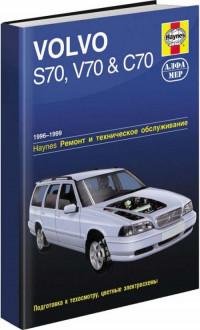
Руководство по техническому обслуживанию и ремонту автомбилей Volvo C70/S70/V70 1996-1999 годов выпуска.
- Автор: —
- Издательство: Алфамер
- Год издания: —
- Страниц: 272
- Формат: —
- Размер: —
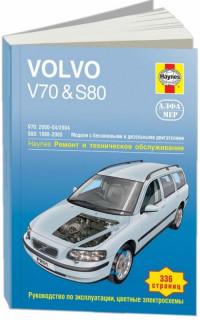
Руководство по эксплуатации, техническому обслуживанию и ремонту автомбилей Volvo V70 2000-2004 и Volvo S80 1998-2005 годов выпуска с бензиновыми и дизельными двигателями.
- Автор: Мартин Рэндалл
- Издательство: Алфамер Паблишинг
- Год издания: 2006
- Страниц: 310
- Формат: —
- Размер: —
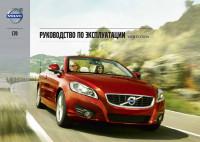
Сборник руководств по эксплуатации и техническому обслуживанию автомбиля Volvo C70 с 2006 года выпуска.
- Автор: —
- Издательство: Volvo Car Corporation
- Год издания: 2006-2012
- Страниц: —
- Формат: PDF
- Размер: 35,2 Mb
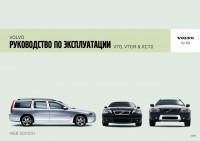
Сборник руководств по эксплуатации и техническому обслуживанию автомбилей Volvo V70 и Volvo XC70 2004-2006 годов выпуска.
- Автор: —
- Издательство: Volvo Car Corporation
- Год издания: 2003/2004/2005
- Страниц: 196/226/250
- Формат: PDF
- Размер: 17,8 Mb
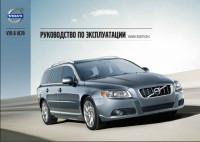
Сборник руководств по эксплуатации и техническому обслуживанию автомбилей Volvo V70 и Volvo XC70 2007-2015 годов выпуска.
- Автор: —
- Издательство: Volvo Car Corporation
- Год издания: 2006-2014
- Страниц: —
- Формат: PDF
- Размер: 69,5 Mb
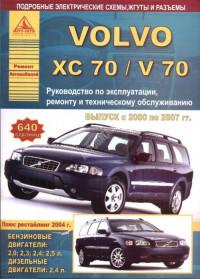
Руководство по эксплуатации, техническому обслуживанию и ремонту автомбилей Volvo V70 и Volvo XC70 2000-2007 годов выпуска с бензиновыми и дизельными двигателями.
- Автор: —
- Издательство: Атласы автомобилей
- Год издания: —
- Страниц: 752
- Формат: —
- Размер: —
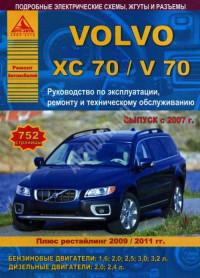
Руководство по эксплуатации, техническому обслуживанию и ремонту автомбилей Volvo V70 и Volvo XC70 с 2007 года выпуска с бензиновыми и дизельными двигателями.
- Автор: —
- Издательство: Атласы автомобилей
- Год издания: —
- Страниц: 752
- Формат: —
- Размер: —
Смотреть руководство для Volvo C70 (1999) ниже. Все руководства на ManualsCat.com могут просматриваться абсолютно бесплатно. Нажав кнопку «Выбор языка» вы можете изменить язык руководства, которое хотите просмотреть.
MANUALSCAT | RU
Вопросы и ответы
У вас есть вопрос о Volvo C70 (1999), но вы не можете найти ответ в пользовательском руководстве? Возможно, пользователи ManualsCat.com смогут помочь вам и ответят на ваш вопрос. Заполните форму ниже — и ваш вопрос будет отображаться под руководством для Volvo C70 (1999). Пожалуйста, убедитесь, что вы опишите свои трудности с Volvo C70 (1999) как можно более детально. Чем более детальным является ваш вопрос, тем более высоки шансы, что другой пользователь быстро ответит на него. Вам будет автоматически отправлено электронное письмо, чтобы проинформировать вас, когда кто-то из пользователей ответит на ваш вопрос.
Задать вопрос о Volvo C70 (1999)
- Бренд:
- Volvo
- Продукт:
- автомобили
- Модель/название:
- C70 (1999)
- Тип файла:
- Доступные языки:
- английский
Сопутствующие товары Volvo C70 (1999)
Комментарии
3
Войдите или зарегистрируйтесь, чтобы писать комментарии, задавать вопросы и участвовать в обсуждении.
Войти
Зарегистрироваться
Irek-tatarin73
Я езжу на Toyota RAV4 (IV)
Ребята нужна инструкция, как установить метки грм на S70 дизель 1999г B5252t мотор
Авто не запускается после обрыва навесного ремня, есть там секрет какой?
8 лет
KILROY30
Я езжу на Volvo S80 II
вещь хорошая только что то в мелком виде все)
10 лет
Valeron22
Автор
Я езжу на Volvo S70
Согласен, хоть лупу бери))хахах
10 лет




















